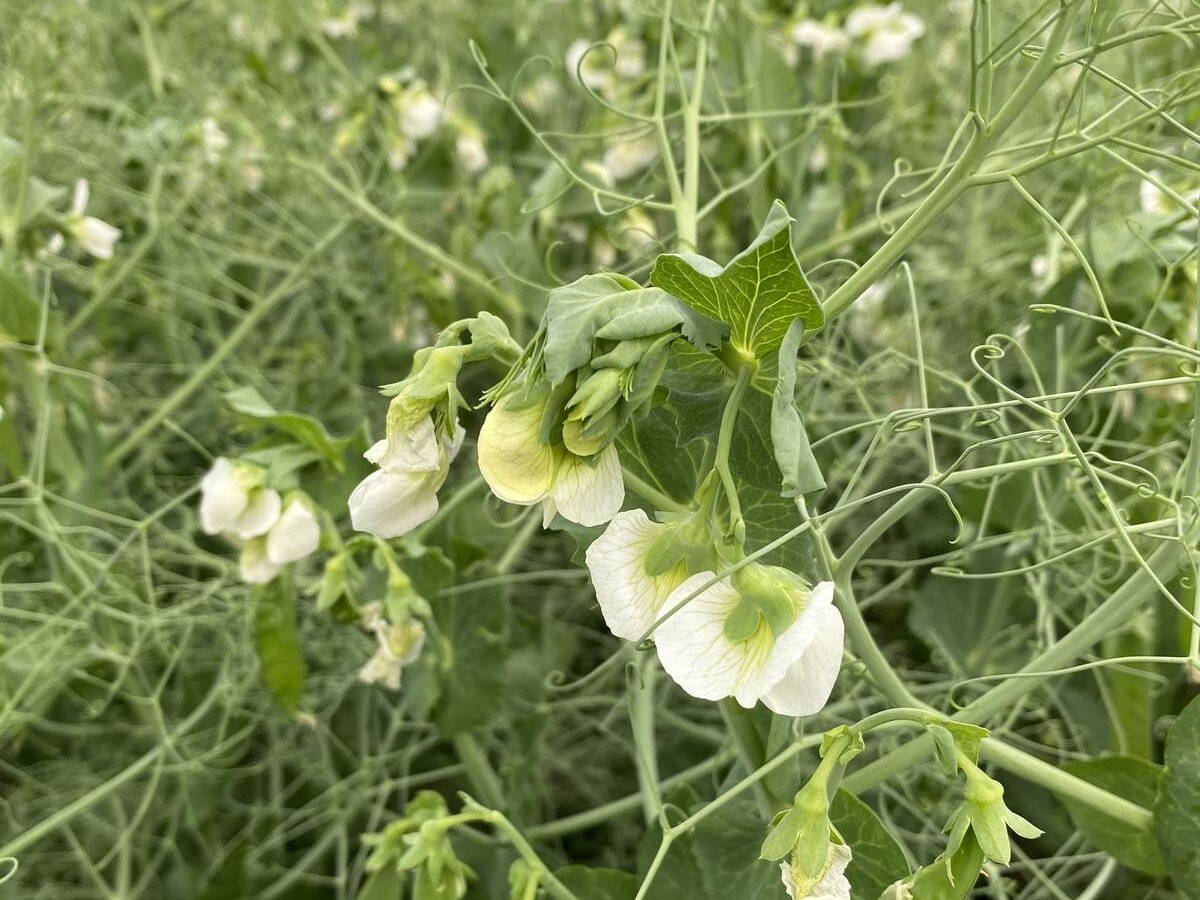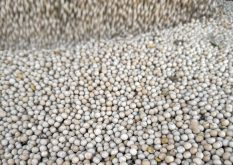We are a little more than halfway through the crop year and it looks like exports and domestic use of major crops are on pace to reach the forecasts set out in Agriculture Canada’s monthly supply and demand outlook.
Later on, I’ll also look at developments in soybean oil and meal markets, but first, let’s look at exports.
As of week 26, halfway through the crop year, canola exports are at 4.295 million tonnes, according to the Canadian Grain Commission’s weekly export report.
Read Also

India slaps 30 per cent import duty on yellow peas
India has imposed a 30 per cent duty on yellow pea imports with a bill of lading date on or after Nov. 1, 2025.
Agriculture Canada’s January monthly supply and demand forecast pegged expected full-year canola exports at 8.6 million tonnes, so half that is 4.3 million, meaning actual exports so far are meeting expectations.
Agriculture Canada’s full-year domestic food and industrial use forecast is 9.5 million tonnes. Half that is 4.75 million tonnes. The CGC report for week 26 puts domestic use at 5.117 million tonnes, so it appears crushers are a little more active than forecasted.
That should not come as a surprise because crush margins are still more than attractive.
The ICE Canola Board Crush Margin, which measures the trend in processing returns for canola, based on the March contract, show it is still above $200 per tonne, which is down from the astronomically high levels above $300 last fall, but still very profitable compared to previous years.
The modest decline in crush profitability from last fall is related to the decline in soybean oil, which peaked last November at levels above US72 cents per pound, but is now down near 60 cents, although that is still high compared to values that were normal before 2021.
If canola exporters and crushers can maintain this pace to the end of the crop year, and if the government’s statistics are correct, pegging the total supply at 19.15 million tonnes (production of 18.17 million tonnes plus carry-in of 875,000) then the carry-out would be a very slim 800,000 tonnes, the tightest stocks since 2012-13’s 588,000 tonnes.
That supports the canola price, but of course the price trends in other oilseeds and in crude oil also have a large bearing on canola’s value.
Turning to wheat exports, we also see good movement.
The Agriculture Canada forecast for exports of wheat other than durum is 19.1 million tonnes and half of that is 9.55 million.
The CGC says that at the end of week 26, exports stood at 9.924 million tonnes, so we are ahead of the pace needed to match the full-year forecast.
For durum, the export forecast is 4.8 million tonnes and half of that is 2.4 million.
The CGC says half-year exports are 2.696 million, so we are also ahead of the needed pace in that crop.
Turning back to canola and the other parts of the oilseed complex that affect canola’s price, it is notable that recently soymeal’s price is much stronger than soy oil.
On Feb. 10, the Chicago March soymeal price edged above US$500 a ton, the highest since June 4, 2014.
Soymeal has rallied since early December while soy oil has mostly fallen.
Soybean crushers in the United States in December fell short of demand because of harsh winter weather and holiday breaks. The crush came in at 187.4 million bushels for the month, well below the 198.2 million bu. crushed in December 2021.
The tightness was prolonged by unexpected plant maintenance shutdowns in January.
There is also support for soy meal associated with the drought in Argentina.
That country is the world’s largest exporter of soy meal, but the drought there is expected to severely cut the size of the soybean crop and limit its exports of soymeal, even though it will likely increase imports of seed from Brazil to keep its crushers in business.
The USDA noted Argentina’s export soymeal price in January averaged US$584 per tonne, up $45 from the December average.
The U.S. export price rose to $583, up $42.
However, the strong meal price might not last that long.
An article prepared by Scott Gerlt, American Soybean Association chief economist, in November noted that in preparation for an expected massive expansion of soy-based renewable diesel, companies have announced 23 projects that would increase the national crush by 750 million bu., or an expansion of 34 percent.
The projects include 13 new crush plants and 10 expansions. There is no guarantee that all will be built, but some are under construction.
The oil produced will go to new renewable diesel plants, but there will also be lots of meal that could pressure lower the price of that feed.
And as a recent Western Producer story noted, there will also be a lot more canola meal available once the new crushers in this country come on line.















